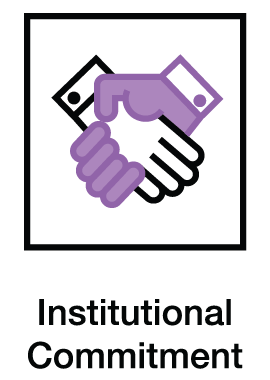Safer food through institutional commitment

The first pillar of leadership: institutional commitment
Consumers are increasingly concerned about what’s in their food – from the additives, or substances, used to flavor, color, preserve, and package their food to chemical contaminants picked up along the supply chain and migrating into their food. Too often harmful substances like BPA, ortho-phthalates, and perchlorate persist in the market – and environment – for years before action is taken.
As with any business initiative, successful outcomes require strong commitment and support from leaders across the organization – from the C-suite to middle management. Solid commitment from company executives and management in key business divisions is the only way to ensure that staff will be afforded the steady support and resources they need to be successful.
Modifying how a manufacturer selects the ingredients it uses or how a retailer selects products requires time, resources, and infrastructural and behavioral adjustments.
In a committed company, action ripples throughout the organization; company executives set top-level goals that are reinforced by middle management in a way that empowers employees in every business function to make the transformation successful through their own daily operations.
See model food policy
Importance of a corporate safer food policy
The most effective tool in jump-starting and sustaining institutional commitment for safer food is a written corporate policy. A strong policy begins with an overarching vision of the transformations the company wants to achieve in its management and, ultimately, its product portfolio. A strong policy also tackles both direct food additives and chemical contaminants. The scope of the policy, i.e. whether the policy will apply to all products made (or sold) or to a subset of such products, should also be made clear.
The company’s specific initiatives for attaining leadership on safer food are the core of a corporate safer food policy. EDF has identified supply chain transparency, informing consumers, and safer product design as the most critical leadership initiatives for a company to undertake. The written policy lays out the top goals for these initiatives. Thus, a policy institutionalizes a company’s commitment to lead on safer food additives while also articulating what the company wants to achieve. The policy is also powerful in helping suppliers understand where the company wants to go and how the supply chain will be involved.


Overcoming hurdles on the path to leadership
Make it relevant
Sparking and sustaining institutional commitment is not easy. It can be difficult to catalyze change in a corporation, particularly a large, established company that has been profitable in its existing way of doing business. The first step is embracing needed change. One of the most useful strategies in fostering alignment is to see the topic through the eyes of a particular business function. How would the new goals affect primary objectives? Where are synergies? What aspects resonate best with their daily operations?
Perfect as enemy of the good
Don’t allow an imperfect beginning to stall action. The first draft of a policy is not going to look like the final version, and that’s okay. Iterative conversations with stakeholders will flesh it out. Likewise, over time as the policy is implemented and insights are gained, new aspirational goals can be identified and integrated into the policy.
Crafting an effective corporate safer food additives policy
At a high level, the crafting of a strong policy is an iterative process and involves gaining input from key business functions, understanding current business processes and resources, and revising ideas of what is typical, attainable, and aspirational. In a retail company, merchandising, sourcing, compliance and legal are among the strategic functions to include in policy development. In a brand or product manufacturing firm, input is necessary from all business functions impacted by the policy, including R&D, product design, materials procurement, and technical support staff (including those who review material performance and those who review health impact), as well as legal and compliance.
Consulting the advocacy community is also useful when crafting a safer food policy, whether through direct engagement or through landscape research. Some organizations may provide additional subject matter expertise, others greater insight into consumer needs.
Ultimately, for the policy to gain traction in the organization, it needs to be endorsed by the corporate executives who oversee the business functions that will be directly involved in applying the policy. Their management teams will be crucial in communicating to employees and suppliers how the policy will impact existing business processes and what will be expected from them in making the policy successful.
Go to: EDF’s model safer food additive policy for retailers and grocers
Go to: The second pillar of leadership: supply chain transparency
